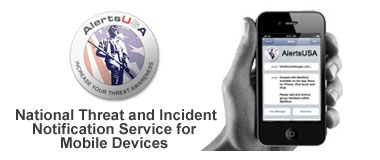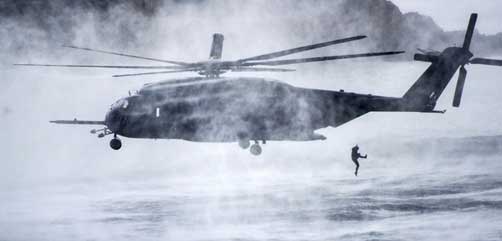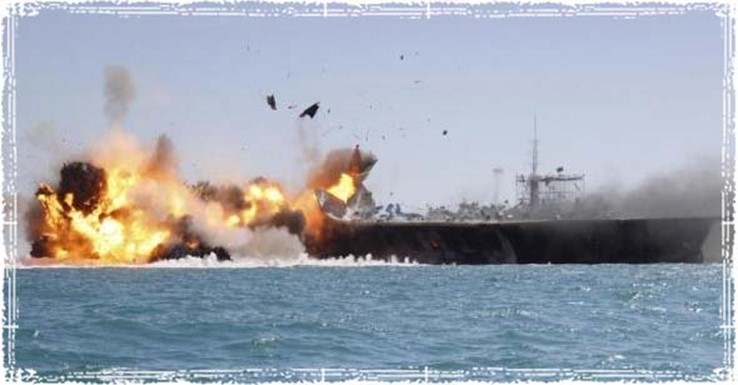If the US federal government says something is a threat — or if they happen to admit that something’s a threat — then it’s likely much more of a pending alarming situation than the government cares to admit.
Keeping that in mind, the federal government — which include multiple agencies and the military — have relinquished that one huge threat to our very lives is an Electromagnetic Pulse (EMP).
Whether it takes place by intent (a nuclear detonation or terrorism) or by chance (EMP destruction caused by a meteorite or comet), an EMP event would no doubt be life altering.
If an event like this were to take place, one major challenge would be transportation. The majority of today’s vehicles are reliant on computers and electrical components which translates to if an EMP took place, a vehicle would become hunks of metal, rubber, and plastic.
Some estimates put the aftermath of an EMP to be weeks, some months and a few, more dire predictions put the recovery time at years.
That means you have to do what you can to ensure your vehicle(s) are as EMP proof as possible; here are some tips when choosing a vehicle and some ways you can further EMP-protect your vehicles.
First, there are factors to consider in choosing a post-EMP bug-out or survival vehicle:
1. Benefits of Diesel
A large and strong enough EMP could stop the extraction, refinement, distribution and sale of fossil fuels. Whatever gas you have on hand could be all the gas you get for years. The more highly a fuel is refined, the shorter its storage life. Diesel is less refined than unleaded so diesel stores longer.
You make biodiesel from crops that you grow. Diesel motors are somewhat simpler than gasoline motors in that they do not have an ignition system. This cuts down on some vulnerable parts.
Most tractors also run on diesel too, so for many homesteaders, it is worth considering.
2. Fuel Capacity
You can add oversized and/or additional fuel tanks to many vehicles, increasing the vehicle’s range. A post EMP world will likely have far fewer gas stations, if any. To get at any of remaining fuel, you will need a pump and hose like the Jackrabbit by Black & Decker.
Even though you’d like to bug out in your shelter or bug out cabin in the woods that may not be a possibility. It’s always a good idea to have a backup plan and one such backup is making sure your vehicle also has a cargo space, roof rack, or a swing out to create more space. In addition to that, a vehicle that has off-road capability will be essential to driving where you need to go no matter the weather or road.
3. Cargo or Towing Capability
By the time you pile in what will surely be everything you own in this world, your spouse, your 2.4 kids, grandma and the golden retriever, you may be looking for ways to increase your vehicle’s carrying capacity. So cargo space, a trailer hitch, roof rack, swing outs and so forth will come in handy. For many, the vehicle will likely double as their home.
4. Off-Road Capability
Features such as 4-wheel drive, a full size spare, plenty of ground clearance, all-terrain tires, lockers, extraction or trail gear, towing points, winch and off road lighting will come in handy post-EMP because roads will no longer be maintained, disabled vehicles and vehicles that have run out of fuel will litter the roadway. Imagine the highway or even your own street after a snowstorm without any snowplows or drivers to remove the snow and 4-wheel drive and over-size tires starts to look like a pretty good idea
Sure a souped up car may seem cool right now, but when SHTF it’s going to be the last thing you need. A vehicle that’s easy to repair and that also consists of parts that you could easily find or get if you needed to is recommended. It’ll make life so much easier for you during an EMP.
5. Ease of Maintenance & Repair
Simplicity is a good thing when it comes to survival. Without computers, there is only so much to “do it yourself” on newer vehicles so older vehicles have greater appeal. A good repair manual and well-equipped toolbox are mission-critical equipment.
6. Commonality of Parts
An expensive custom vehicle might look cool online or be fun to daydream about, but after a HEMP, the first time it needs a part, you might wish you bought something a little more pedestrian (no pun intended). Better still would be 2 or 3 less-expensive vehicles as opposed to a single vehicle that strains your financial resources.
My grandfather did this and I learned it from him. He would take multiple beat-up vehicles and turn them into fewer good ones … and have a bunch of spare parts left over. A bunch of spare parts would be a good thing post-EMP.
Again, newer vehicles have 100’s of processors that make everything about a car complicated and intricate. Avoid getting a vehicle with the systems listed below, as it will be very difficult to find replacement parts for them. Furthermore, keep reading to learn the best way to blend in and not stand out during an EMP — your lives depend on it!
7. Fewest Possible Microelectronics, Computers or Chips
Some newer vehicles have in excess of 100 processors that run on miniscule amounts of power. They sense and control virtually every function of the vehicle and are very sensitive to EMP.
How far are you going to get without an engine, fuel injection, transmission or 4-wheel drive system? Sure, car manufacturers take reasonable precautions to shield them, but not against such great field strengths or over the entire frequency range EMP covers. Any transistor-based technology is vulnerable.
Avoid vehicles with the following systems, rewire them or replace them with their non-electronic counterparts and/or stock replacements in a Faraday cage:
• PCM (Powertrain Control Module)
• Anti-lock Braking System
• Electronic Fuel Injection
• Electronic Ignition
• Computers Controlling Critical Systems
• Consumer Electronics
• Long Antennas
• Negative Battery Terminal Grounded to Vehicle Frame
8. Overt vs Covert
It is often best to blend in as opposed to standing out. In the city, that might mean driving a white sedan or van. In the bush, it might mean a camouflage or matte earth tone paint job.
Other times, looking like you are not worth tangling with might be the better option.
A durable metal body is crucial for your SHTF vehicle, as is EMP-hardening your auto. Rebuilding your vehicle may be necessary especially if you don’t have the funds to buy another vehicle. However, by investing your time to make sure your auto has the correct features for when an EMP arrives, you’ll be glad you took the time to make sure everything was setup correctly.
9. Conductive Metal Body
For the best EMP-resistance, choose a vehicle with conductive metal body enclosing the engine and passenger compartment or cab over a vehicle with body panels made of fiberglass, plastic or any other non-conductive material.
How to EMP-Harden Your Auto
If your vehicle already has these features or you are already doing these things, then you are already part of the way there. There are many features to look for and modifications to make to both your vehicle and your SOP (Standard Operating Procedure) regarding that vehicle.
No matter which automobile you choose, there is always more that can be done to minimize the effect of HEMP on the vehicle.
• Ground all conductive components of the vehicle to a single point on the chassis. Do not ground them to the earth.
• Rewire with shielded wiring: Verify that your wiring is shielded or replace all you can with shielded wiring.
• Re-bond metal body panels: Remove body panels and make sure that you have good conductive bonds between body panels by removing paint and installing conductive gasket material or make sure you have metal on metal contact with as much overlap as possible. This will help the body conduct energy through the vehicle skin like the skin of a Faraday cage. Just do not allow yourself to be fooled into thinking that the vehicle skin is without holes that compromise its integrity.
• Route wiring close to the vehicle frame
• Install ferrite clamps or snap on cores on cable ends
• Protect cable entry and exit points with surge suppression: This will need to be fast-clamping surge protection faster than one millisecond that will handle high voltages. (Think lightening protection.)
• Mechanical ignition (points and condenser)
• Install EMP-rated surge protection on antennas
• Mechanical fuel & water pumps
• Carburetor or mechanical fuel injection
• Keep spares of vulnerable parts you cannot replace in a Faraday cage: You may have a vehicle that is mostly good to go, but it still parts like a starter, alternator and voltage regulator that do not contain microelectronics, but could still conceivably be affected.
• Manual transmission: Some will surely disagree with me on this one, but they are easier to repair and make it possible to push start vehicles even if the battery is shot or missing. Even some diesels can be push or roll started if you wire open the fuel valve.
An EMP seems like a remote threat until you realize how many “rogue” nations have nuclear weapons or are desperately trying to get them. Add into that mix terrorists who are determined to alter our way of life and the threat becomes more real.
So real the US federal government has indicated they are worried and if they admit that, we all should be very worried
To learn more about vehicles that will stand up better against an EMP, please visit Survivorpedia.
Start now to make sure you are staying prepared.
Via: diehardsurvivor





!
















 Follow
Follow





















